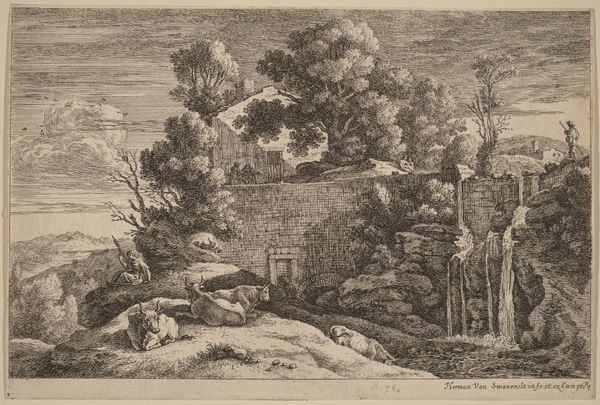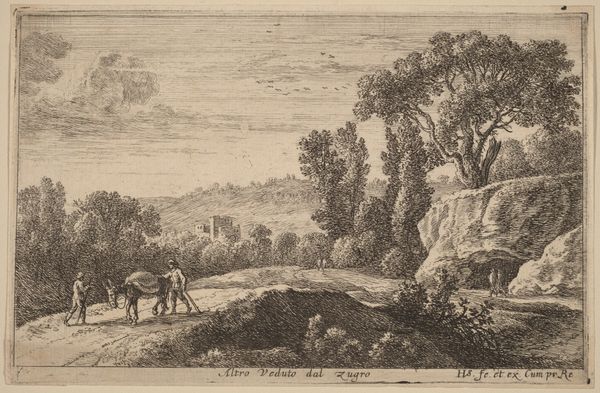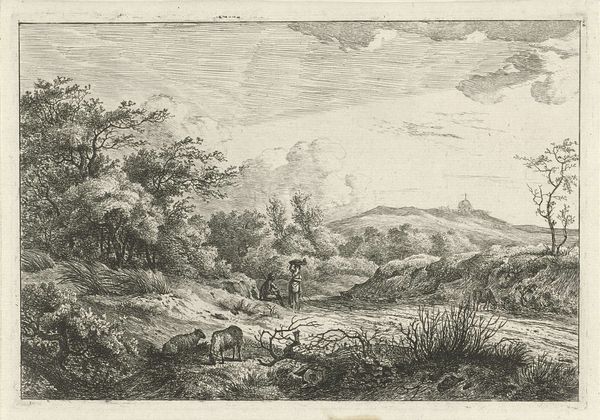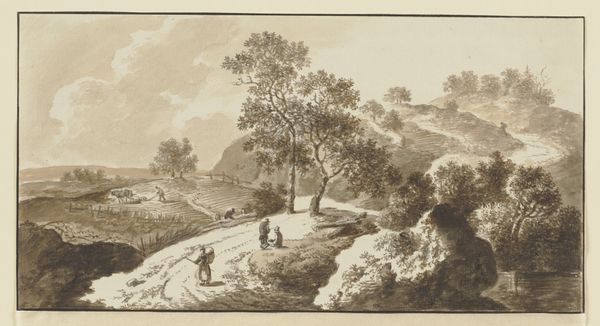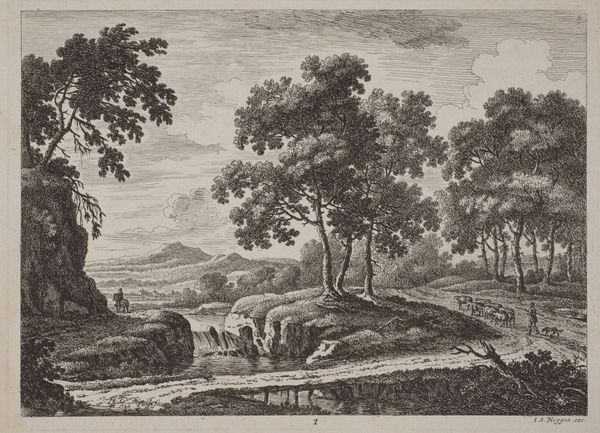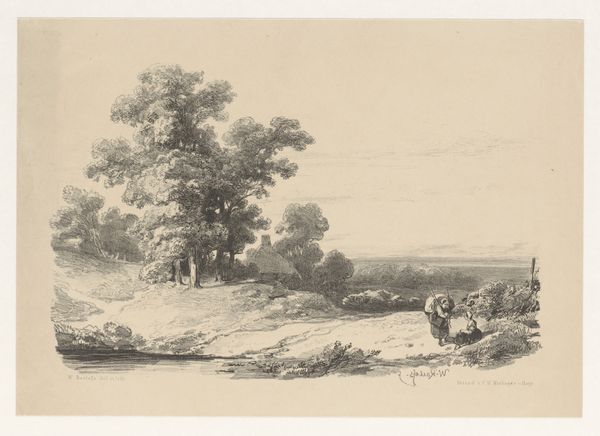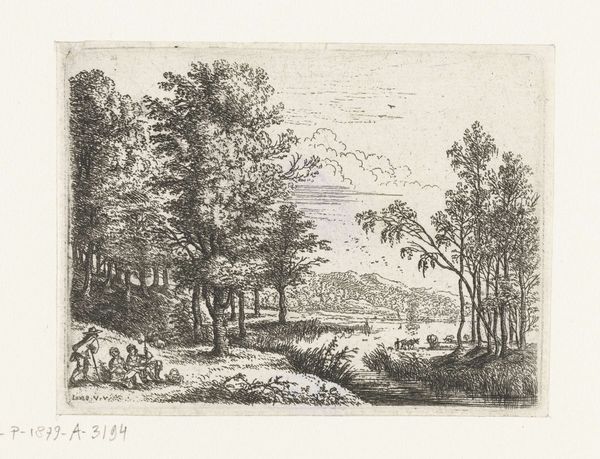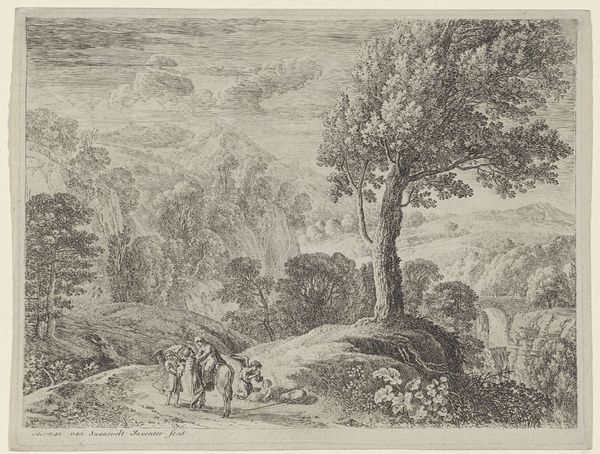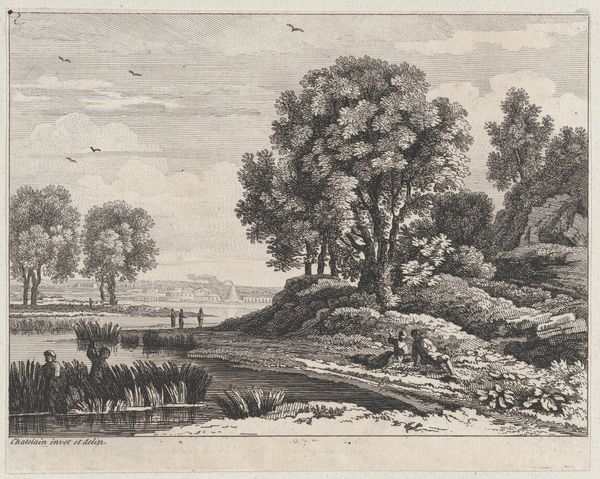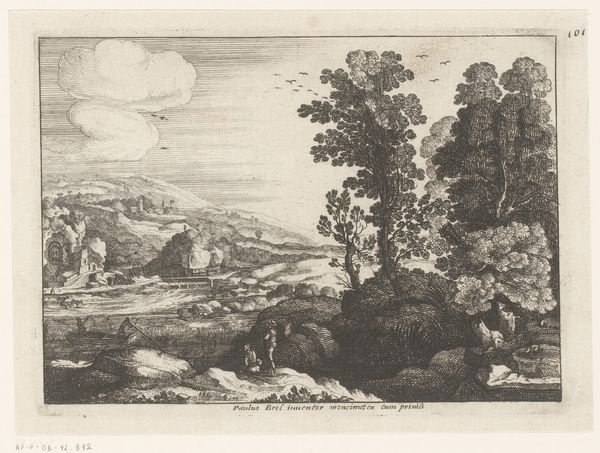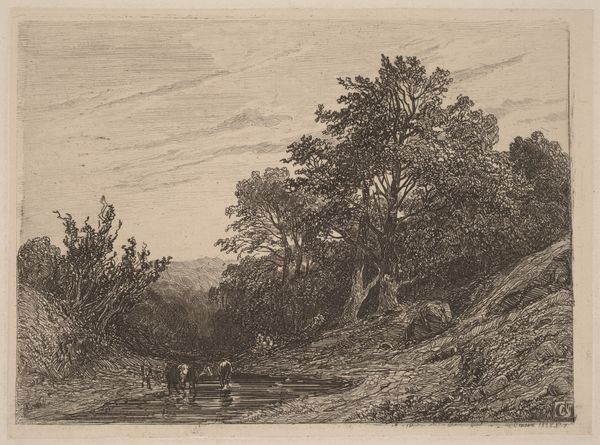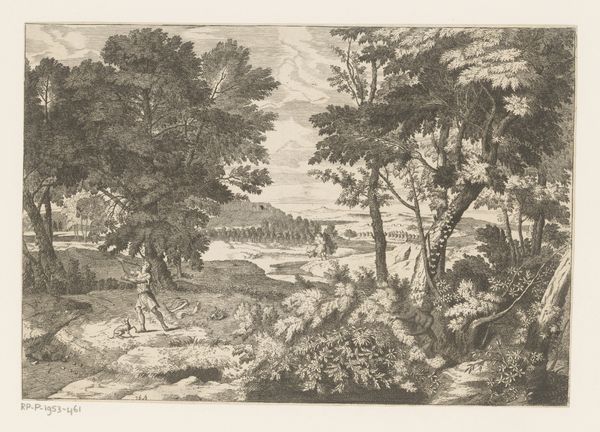
print, etching
#
pencil drawn
#
baroque
# print
#
etching
#
landscape
#
line
#
history-painting
Copyright: National Gallery of Art: CC0 1.0
Editor: This is "Third View of Zugro," an etching by Herman van Swanevelt. It has such intricate lines and a gentle feel. What do you see in this landscape that I might be missing? Curator: Well, I see a highly constructed landscape, not just a simple depiction of nature. Think about whose gaze this landscape caters to, and who it excludes. Do you notice the tiny figures? They almost seem overwhelmed by the land. Editor: Yes, now that you mention it, they seem to disappear within it. What was Swanevelt trying to convey through the positioning of the people and landscape? Curator: I think Swanevelt may have been trying to grapple with ideas of possession, the ownership and power connected to land in the 17th century. Who had access to these views? Who benefited from the land and at whose expense? How did views of landscape affect cultural norms of its time? The details in nature versus the almost hidden people might reveal such concerns. Editor: So you're saying it might be more than just a pretty picture. The artist embeds social commentary within a seemingly innocuous image? Curator: Exactly! Art often reflects and reinforces existing power structures. Questioning whose perspectives are presented in these historical works, who is prioritized in their portrayal of power, becomes imperative to contemporary art historical discussions and their legacies. Editor: That’s really given me a new perspective on this etching. It makes you wonder what’s left out and whose stories aren’t being told, and consider why certain groups of people would be minimized. Curator: Precisely. Looking critically allows us to have a broader view of history that considers social imbalances and questions traditionally-held art historical positions.
Comments
No comments
Be the first to comment and join the conversation on the ultimate creative platform.
